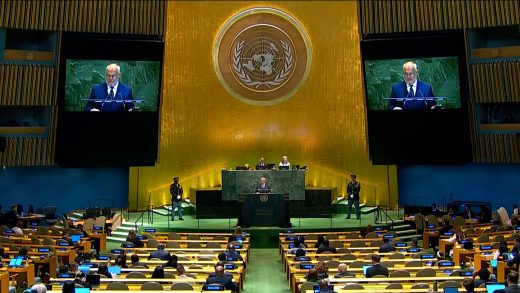Olga Robinson & Matt MurphyBBC Verify and
Yaroslava KiryukhinaBBC Russian
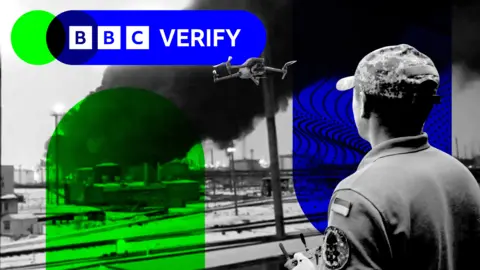 BBC
BBCUkraine has dramatically increased the number of attacks launched against Russian oil refineries in recent months, sparking fuel shortages and price rises in some parts of the country, BBC Verify and BBC Russian have found.
Drone strikes on refineries – some deep inside Russia – soared in August and remained high in September, an analysis of Russian media reports and verified footage showed.
Some 21 of the country’s 38 large refineries – where crude oil is converted into useable fuel like petrol and diesel – have been hit since January, with successful attacks already 48% higher than the whole of 2024.
Ordinary Russians appear to be feeling the impact of the strikes, with verified videos showing long queues at petrol stations. Some garages have suspended operations to “wait out the crisis” rather than work at a loss, one manager told Russian media.
Ukraine’s security service, the SBU, did not respond to a request for comment. But President Volodymyr Zelensky has said damaging Russia’s oil industry is a key means of forcing Russia to the negotiating table.
“The most effective sanctions – the ones that work the fastest – are the fires at Russia’s oil refineries, its terminals, oil depots,” the Ukrainian leader said in a September address. “We have significantly restricted Russia’s oil industry, and this significantly restricts the war.”
Our analysis shows reported attacks reached a record level in August, with 14 refineries targeted by Ukrainian drones, and eight in September. The increase came after a brief lull coinciding with a flurry of diplomacy, during which President Donald Trump attempted to broker a ceasefire deal between Kyiv and Moscow.
Some of the strikes have been launched against facilities deep inside Russia. In late September, the SBU successfully hit the Gazprom Neftekhim Salavat oil refinery in the Bashkortostan region twice.
Satellite images showed smoke billowing from the facility – which is more than 1,100km (683 miles) from the Ukrainian border – after the attack.
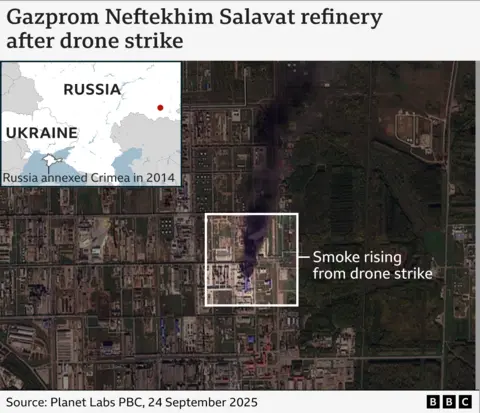
Kyiv has also attacked some of Russia’s most lucrative facilities. A refinery near Volgograd has been targeted six times this year – with an attack in August forcing it to halt operations for a month. The large Ryazan plant near Moscow – capable of producing 340,000 barrels per day – has been hit five times since January.
Ukrainian strikes appear to be pursuing two targets – large refineries essential to civilian supplies and those closer to the border used to supply troops fighting in Ukraine, Vladimir Milov, a former deputy energy minister under Vladimir Putin and now an exiled opposition politician, told BBC Verify.
Ukraine’s general staff has previously claimed that refineries in Samara and Saratov have been used as part of military logistics operations. Both regions have been hit by drone strikes in recent weeks, with two of the three plants in Samara region taken offline.
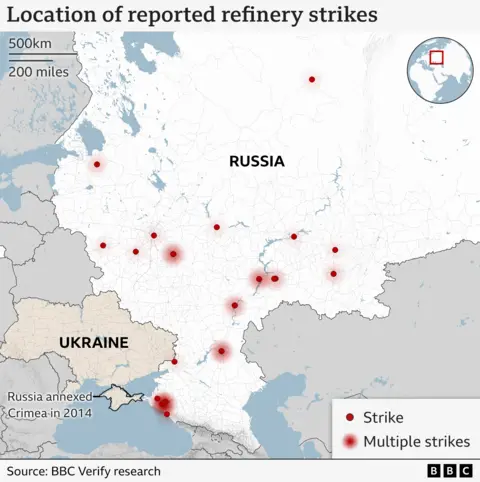
Justin Crump, an ex-British army officer and CEO of the risk consultancy Sibylline, told BBC Verify that Ukraine had long targeted Russia’s oil and gas industry. But he noted that the flurry of strikes showed that the military and security services have now settled on the tactic as a “core campaign”.
“This campaign has obviously been the focus of significant investment and is driven by an intelligence assessment of what will hurt Russia the most,” Mr Crump said.
It is difficult to measure the extent to which the strikes are impacting the output of petrol and diesel as Russia classified statistics relating to gasoline production in May 2024 amid an earlier spate of attacks on refineries.
But BBC Verify’s analysis found that at least 10 oil refineries have been forced to fully or partially suspend operations since August, and the Reuters news agency has reported that on certain days national production has declined by as much as a fifth.
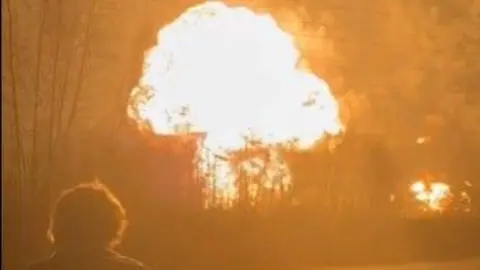 Telegram
TelegramThere is some evidence that the refinery strikes are having an impact on civilian life in parts of Russia. Videos confirmed by BBC Verify have shown long queues at petrol stations in the far east and on a highway between St Petersburg and Moscow, while Kremlin-installed officials have introduced rationing of gasoline in occupied Crimea.
Owners of small and independent petrol stations in Siberia have told Russian media they have had to shut down due to ongoing issues with fuel supply. A manager in the Novosibirsk region compared the situation to the hyperinflation experienced by post-Soviet Russia.
“In my opinion we haven’t had a crisis like this since 1993-1994,” he told local outlet Precedent TV. “Many petrol stations have now suspended their operations. Perhaps it is better to wait out the crisis than make a loss.”
While Russia has traditionally seen price increases spurred on by summer travelling and oil refinery maintenance, the drone strikes are exacerbating it.
Retail petrol prices have surged, while wholesale prices – the cost at which retailers buy from producers – have risen even faster, growing by 40% since January.
The tightly controlled domestic media has hinted that drone strikes are a key factor for the shortages, with the daily business newspaper Kommersant attributing the shortfall to “unscheduled refinery shutdowns”.
But civilians in western Russia – including the Moscow and Krasnodar regions – appear to be largely unaffected. Some of those who spoke to the BBC said they were unaware of the shortages elsewhere in the country.
Russian officials have insisted that the situation remains under control. During a press briefing this week Kremlin spokesperson Dmitry Peskov said the “government is taking the necessary measures” to address shortages.
But Deputy Prime Minister Alexander Novak announced last week that a partial ban on petrol exports had been extended to the end of 2025. Opposition politician Mr Milov noted that the export suspension was relatively small and “won’t save the domestic market”.
The extent to which the strikes are impacting Moscow’s ability to use oil revenues to fund its war in Ukraine is also unclear.
The vast majority of Russia’s oil exports are in the form of unrefined crude oil, which do not appear to have been impacted by the strikes. An analysis carried out by Bloomberg at the end of September showed that crude oil exports – while less profitable than petrol and diesel – had reached a record high.
Mr Crump observed that the impact of the strikes could be strengthened if “further measures” and sanctions targeting oil exports were adopted by the West, but emphasised that the attacks were undermining Moscow’s ability to fight the war.
“This campaign alone will not bring Russia to its knees, but is definitely increasing the pain of the protracted conflict.”
Additional reporting by Christine Jeavans.



